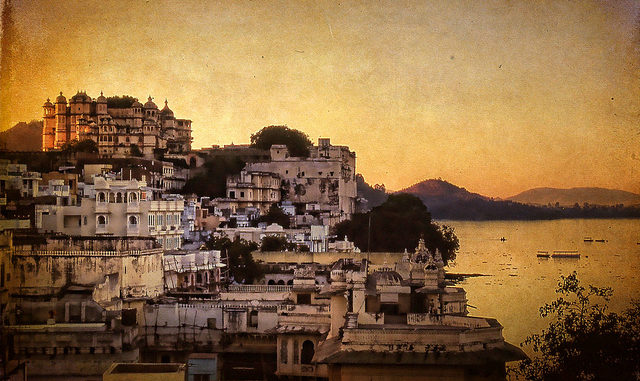
Fringe radical groups are in news again. This time Karni Sena, which ostensibly has the moral responsibility of protecting RAJPUT pride, attacked Sanjay Leela Bhansali and vandalized his shooting site in Jaipur, where he was shooting his latest movie on a famous Mewar queen Padmavati (also known as Rani Padmani).
There are various active groups actually, who used this word Sena as suffix and they are self-proclaimed protector of legacy of Hindus and traditions of ancient / medieval India. One is this Karni Sena, and then there is Parshuram Sena and few more. Bal Thackeray in Maharashtra founded Shiv Sena basis his Maratha pride rhetoric. Unlike these other Senas, Shiv Sena made it big in political arena. Motto of each of these other Senas is political only, and success of Shiv Sena provided the template for formation for all these groups with suffix Sena. The head of Karni Sena, Lokendra Singh Kalvi is politician only, who is toiling to make political base in Rajasthan.
Purportedly Karni Sena is hurt as Bhansali is distorting history of glorious Rajput. But then the big question is that which history are they talking about?
At least in India, prominently there are two types of history. The first type is the history, which has evidences and by and large it is accepted as authentic history by legion of historians. The second part is the one which has evolved essentially because of folklores or because of act of eulogizing by contemporary writers and story tellers. Please note that this second part is different than mythology, which you can probably tip as the third type of history. Mythology is like fiction as there are no evidences of characters themselves. In second type of history, characters per se did exist and historians also agree on that but there is hardly any acceptability on the depicted or narrated events involving those characters.
There in numerous examples of this. History says that ruler of Delhi Prithiviraj Chauhan was killed by Mohammad Gauri in the second battle of Tarain in 1192. Then there is another part of it; Prithiviraj was captured by Gauri, who took him to Ghazni. Later Prithiviraj killed Gauri very smartly with the help of his friend and poet Chandvardai. Whereas there are clear evidences that Gauri was assassinated in 1206 and there are no real evidence that Chauhan survived after 1192.
Filmmakers normally pick the second type of history. There is hardly any historical evidence of conflict between Salim (later Emperor Jahangir) and his father because of Salim’s love interest Anarkali, as depicted by K. Ashif in Mughal –e- Azam; but Mughal-e-Azam is regarded in one of best of Bollywood till date.
In 2001 movie Asoka (Shahrukh Khan in title role), it was shown that Asoka’s close aide killed his half-brother and his main competition for the throne Sushima, as Sushima was about to backstab Asoka in a sheer act to deceit. Whereas the evidenced history is, that Asoka and his supporters killed Sushima in well hatched conspiracy when Sushima was entering Patliputra. Naturally director had to portray his protagonist in good esteem. In fact in bizarre contradiction to the most acceptable history, Asoka’s love interest was shown as the princess of the kingdom Kalinga, whereas the accepted history is that she was a fisherwoman.
You can expect untwisted history from DD’s shows like Bharat – Ek Khoj, but not from movies. Historical TV serials, which have been aired for past few years are much worse and full of fictitious anecdotes. In one TV sop on Maharana Pratap, Akbar was shown as a bigot and eccentric, which is blatantly contrary to what Akbar really was.
Director would show, what suits for the narrative he wants to tell. In his previous movie, Bajirao Mastani, Bhansali portrayed Bajirao a true warrior and a man committed in love, completely ignoring the fact that ruthless military campaigns of Marathas were full of barbarism and endless atrocities on common citizens.
Coming to the latest row at the set of Bhansali’s movie at Jaipur, which is based at 13th–14th century Chittorgarh queen Rani Padmavati. In first place, whatever Bhansali is trying to depict as director of the movie is purely Bhansali’s prerogative. The motives behind the attack under the garb of Rajput pride are definitely ulterior in nature.
Secondly, does Karni Sena know what exactly happened in Chittor during that period? Alauddin Khilji attacked Chittorgarh in 1303 AD and it is evidenced and it is authentic history. The legend of Padmini is second type of history, which came out of folklores and legends. Apparently Bhansali is only depicting what actually is commonly told story of Rani Padmini. Even if Bhansali is deviating, then also no one has right to object as different story-tellers may have different perspective.
Karni Sena and its chief Lokendra Kalvi can only object if they have copyright on this story, which they don’t. A little twist in story by a filmmaker would demean Rajput pride but such brazen display of hooliganism in a democratic society would bring glory to them? Really unbelievable.
One last thing, movies are for entertainment only, they are not produced to teach or learn history.
Editorial NOTE: This article is categorized under “opinion” Section. The views expressed in this article are solely those of the author and do not necessarily represent the views of lifenstory.com . In case you have an opposing view, please share the same in the comments section.
Leave a Reply